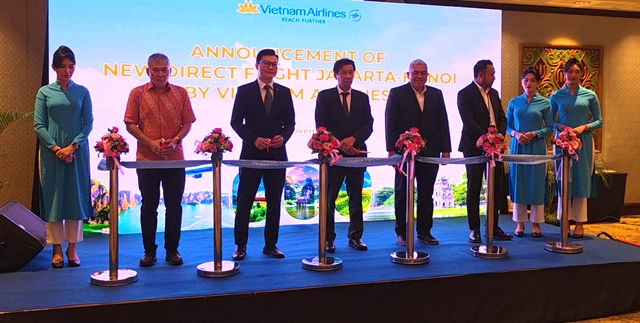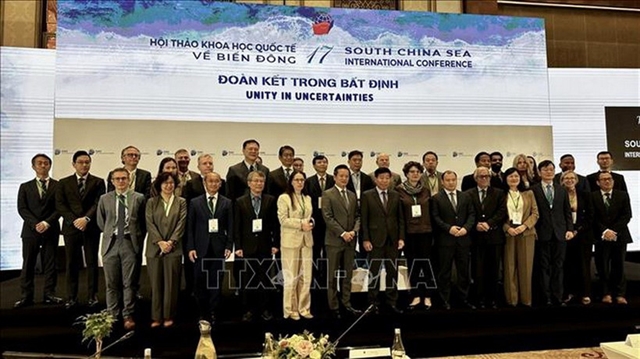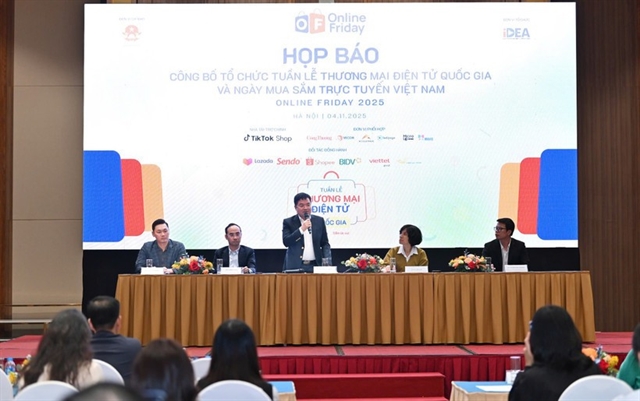, and Ms. Trần Mai Hoa, CEO of VEC (right), at the signing ceremony.) Media-OutReach Newswire
Media-OutReach Newswire

KUALA LUMPUR, MALAYSIA - Media OutReach - 23 January 2019 - Developmentsin technologies such as connectivity, digital services, augmented/virtualreality, big data and artificial intelligence, are revolutionizing the wayconsumers interact and the way enterprises compete. Across of ASEAN, it iscertain that technology is growing in importance as it transforms industries andcontributes to greater digital economic efficiency.
"Digital solutions and services contribute up to 10% of GDP amongASEAN economies. While embracing the digital economy is important for localgovernments, equally important is enabling enterprises to address the evolving needsof the consumer," said Mei Lee Quah, Principal Industry Analayst, ICT, Frost& Sullivan Asia-Pacific.
The majority of transformative technologies and activities underthese government-driven initiatives happen indoors for example at homes,offices, transportation hub, shopping centres, and even manufacturing plants. Asof today, over 80% of network traffic originates from indoors, and this numberis set to increase to 96% with the onset of 5G. As a result, the indoorexperience will become increasingly important going forward.
"The inability of Distributed Antenna System (DAS) as the currentindoor architecture to facilitate the much higher data rates needed to satisfydemand and maximum efficiency required presents a bottleneck, especially forlocal government agendas," said Quah.
She continued, "DigitalIndoor System (DIS) will play a vital role as key infrastructure. Datadriven marketing and data centric innovation are key industry trends where mobilenetwork operators (MNOs) are uniquely positioned regionally as custodian of DISdata that can enable a diversity of smart solutions and services to addressvarying and evolving needs, particularly in regional highly dense areas such asstadiums, airports and transportation hubs."
Regional DIS deployments include the Shatin to Central Link (SCL) ofHong Kong's Mass Transit by HKT and in airports with high passenger flow inIndonesia, Singapore and Philippines. Airport DIS implementations in the regionemulate Turkey's new airport in Istanbul, which is the largest airport in theworld with a DIS deployment. Malaysia Airports Holdings Berhad (MAHB) isworking on its Airports 4.0 digital initiative to make Malaysia's airportssmart and in doing so, stay competitive in the airline business. Within thesedeployments, DIS helps MNOs manage the scalability of capacity needed on shortnotice to ensure all relevant data is captured.
"For governments, DIS with its higher spectrum efficiency ascompared to DAS and ability to operate at 5G frequency bands can help to drivethe digital economy more intelligently and efficiently. Local governments needto plan for indoor solutions as essential for national ICT roadmaps," saidQuah.
With the rise of smart cities across the region, DIS enablement canbe considered as part of construction standards to ensure the solid foundationto realizing true intelligent buildings and reaping the benefits of it.
Quah added, "It is essential that regulators drive incorporation of standardsand policy that support adoption of DIS into national level plans. Specificallyin Malaysia, government agencies need to consider amending the Uniform BuildingBy-Laws 1984 (UBBL) to ensure readiness of digital indoor architecture infrastructurein new buildings. A similar enabling policy is already in place in Singaporeunder the code of practice for info-communication facilities in buildings'COPIF'."
Regulators also need to work towards reducing DIS deploymentdifficulties with site access and infrastructure sharing, ensure compatibilityof DIS by verticals by country and help enterprises to cultivate more digitalbusiness through understanding and removing bottlenecks.
For MNOs, the incentive to consider DIS is driven by their need tomaintain profitability and even more so with the upcoming 5G technologyrequiring more sites. Longer term investment horizons for indoor sites and siteacquisition/management difficulties will drive adoption of DIS, especiallythrough infrastructure sharing. DIS can create new opportunities formonetization while reducing total cost of ownership and ROI. Industry casestudies have shown that MNOs can look forward to reducing ROI to less than fouryears[i]with DIS.
For Building owners, DIS can enable monetization of new digitalservices and operational efficiency improvements. Recent surveys show a highcorrelation between lack of reliable internet connectivity and rental decision,lease terms and pricing. Within this context, joint investment in DIS or rentfree space like rooftop can be seen as a small price to pay to ensure future monetizationof digital services and rental income.
"DIS looks set to play a vital role as key infrastructure for nowand into the future. Through enabling the direct linkages and contribution tothe digital economy, local government and regulators will be able to achieve significantimprovement to people's lives. Through new opportunities for monetization, MNOswill be able to stay innovative, relevant and 5G ready," said Quah.
To access the full article, please visit: https://ww2.frost.com/frost-perspectives/dis-critical-infrastructure-national-digital-economic-transformation/
About Frost & Sullivan
For over five decades, Frost & Sullivanhas become world-renowned for its role in helping investors, corporate leadersand governments navigate economic changes and identify disruptive technologies,Mega Trends, new business models and companies to action, resulting in acontinuous flow of growth opportunities to drive future success. Contact us: Start the discussion.




